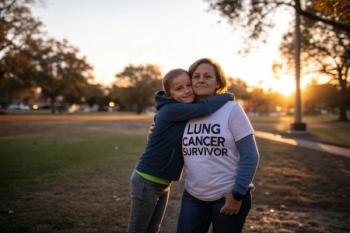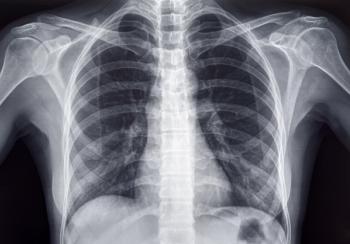
First Double-Lung Transplants in Advanced Lung Cancer
Double lung transplant isn’t new; in fact, it’s more common than single lung transplant. But recently surgeons at Northwestern Medicine in Chicago
The concept of using the procedure in patients with advanced cancer was one of the
“We learned that it was possible to take out heavily diseased lungs that have tons of bacteria in them, which most COVID patients had, carefully, without spreading it into the bloodstream,” said
Bharat, chief of thoracic surgery and director of the Northwestern Medicine Canning Thoracic Institute, led both transplantation operations. The post-transplant survival at one year for those patients was above 90%.
Double transplantation avoids two of the greatest risks of transplanting one lung at a time: The danger of the remaining cancerous lung contaminating the new lung, and cancer cells potentially leaking through the incisions.
“Before we even enter the operating room, we’ve already established with a very high level of certainty that there is no cancer outside the lungs,” said Bharat.
Lung transplantation in lung cancer patients is infrequently performed due to the concerns of recurrence, he notes. But unlike the conventional technique of sequential transplants, “this innovative technique involves putting the patient on full heart and lung bypass, delicately taking both cancer-ridden lungs out at the same time along with the lymph nodes, washing the airways and the chest cavity to clear the cancer, and then putting new lungs in,” Bharat says. “These patients can have billions of cancer cells in the lungs, so we must be extremely meticulous to not let a single cell spill into the patient’s chest cavity or bloodstream. We believe this technique can help reduce the risk of recurrence, which we learned through our experience with pioneering COVID-19 lung transplants.”
Northwestern now is offering the treatment to select patients with stage 4 cancer in a first-of-its-kind clinical program called Double Lung Replacement and Multidisciplinary Care (DREAM).
“The purpose of DREAM is to provide the most comprehensive multidisciplinary care for these complex patients,” Barat said in a Northwestern Medicine news article.
With a new research registry (also called DREAM, for Double Lung Transplant Registry Aimed for Lung-limited Malignancies), the plan is to track the first 75 cancer patients who receive the double-lung transplant. Typically, double-lung recipients have a longer survival than single-lung recipients, with a median rate of 6.6 years compared with 4.6 years.
Bharat says he anticipates some recurrences of cancers, but believes that in most cases, patients will live cancer free. Khoury and Ameli have not required any further cancer therapy.
Newsletter
Get the latest industry news, event updates, and more from Managed healthcare Executive.

















































